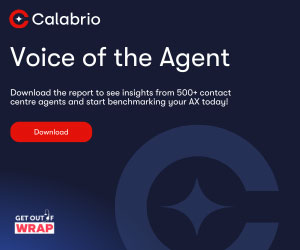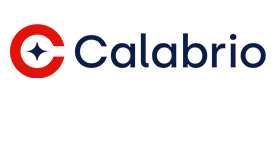Calabrio explores the critical differences between workforce management and workforce optimization, helping contact centre leaders understand when to use each, how they impact performance, and why embracing both is key to boosting efficiency, agent engagement, and customer satisfaction.
Most contact centres struggle with a fundamental question that impacts everything from agent satisfaction to customer experience: Are they managing their workforce or truly optimizing it?
The distinction matters more than you might think. While these terms often get used interchangeably in meeting rooms and strategy sessions, they represent fundamentally different approaches to handling your most valuable asset: your people.
contact centre leaders who understand this difference consistently outperform their competitors in both operational efficiency and agent retention.
This article cuts through the confusion surrounding workforce management and workforce optimization, providing clarity on how each approach impacts your contact centre’s performance.
We’re going to list practical insights on when to apply each strategy, the technology that powers modern solutions, and why the right approach can transform both your customer and agent experience simultaneously.
Here’s everything you need to know about workforce management vs. workforce optimization.
What is Workforce Management (WFM)?
Workforce Management refers to the set of strategies, processes, and systems used by contact centres to manage their workforce efficiently.
The primary focus of WFM is ensuring that the right people are in the right place at the right time to meet customer demand and operational goals.
WFM helps organizations address day-to-day operational challenges by focusing on:
- Forecasting contact volumes across different channels and periods
- Scheduling staff based on predicted demand and agent availability
- Tracking adherence to ensure agents follow their schedules
- Intraday management to handle unexpected spikes in volume or absenteeism
- Business continuity planning to maintain service levels during disruptions
Modern WFM systems combine intelligent forecasting with automated scheduling to optimize staffing levels, considering factors such as agent preferences and compliance requirements.
These systems enable managers to create accurate forecasts, build optimized schedules, and make real-time adjustments as needed.
What is Workforce Optimization (WFO)?
Workforce Optimization takes a broader approach, encompassing WFM while adding components focused on improving agent performance, customer satisfaction, and overall operational efficiency.
WFO doesn’t just ask “Are we properly staffed?” but also “Are our agents performing effectively, and how can we help them improve?”
WFO systems typically include:
- All WFM functionality (forecasting, scheduling, adherence monitoring)
- Quality management tools for evaluating agent performance
- Call recording and speech analytics to identify trends and coaching opportunities
- Performance management dashboards and scorecards
- Training and coaching tools to improve agent skills
- Voice of the customer/employee programs to gather feedback
- Gamification elements to increase engagement and motivation
WFO platforms, also frequently referred to as Workforce Engagement Management (WEM) platforms, combine these elements into a comprehensive WFO suite that helps organizations not only manage staffing levels but also enhance the quality of customer interactions and agent engagement.
Unlike standalone WFM systems, WFO platforms provide tools to assess agent performance, identify coaching opportunities, and deliver targeted training, all while maintaining operational efficiency.
Key Differences Between WFM and WFO
Before you decide which strategy you should select to address the challenges your team is facing, there are some key differences between WFM and WFO that impact your decision.
1. Scope and Focus
Workforce Management primarily addresses the operational mechanics of staffing. WFM concentrates on ensuring your contact centre has the right number of people available at the right times.
It answers operational questions like: How many agents do we need next Tuesday? Which agents are available for the holiday weekend? How do we adjust when call volumes spike unexpectedly?
Workforce Optimization expands beyond staffing logistics to encompass the quality and effectiveness of each interaction. While WFO includes WFM capabilities, it adds layers focused on performance improvement and customer experience.
WFO answers deeper questions: Why are certain interactions more successful than others? How can we systematically improve agent skills? What trends in customer sentiment should inform our training?
2. Operational vs. Strategic Orientation
Workforce Management is fundamentally operational, focused on the contact centre’s day-to-day processes. Its primary contributions are efficiency, consistency, and predictability in staffing levels.
A strong WFM implementation helps contact centres avoid the twin problems of overstaffing (which wastes resources) and understaffing (which damages customer experience).
Workforce Optimization operates at both operational and strategic levels. Beyond ensuring adequate staffing, WFO drives continuous improvement through quality management, performance analytics, and voice-of-customer insights.
These elements inform strategic decisions about training investments, process improvements, and even product development.
3. Metrics and Success Indicators
The metrics that matter to each approach reveal their different orientations. WFM focuses on operational metrics like:
- Schedule adherence percentages
- Forecasting accuracy
- Service level achievement
- Average speed of answer
- Occupancy and staffing efficiency
On the contrary, WFO examines performance and outcome metrics like:
- First contact resolution rates
- Quality and compliance scores
- Customer satisfaction and Net Promoter Score
- Agent performance improvement over time
- Voice of customer insights and sentiment analysis
Together, these metrics show that while WFM keeps the engine of the contact centre running smoothly, WFO ensures it’s headed in the right direction, aligning day-to-day operations with broader business outcomes like customer loyalty and agent growth.
4. The Relationship: WFM as Foundation, WFO as Evolution
When it comes to deciding between WFM and WFO, the answer is never really one or the other. Both strategies need some input from the other to complement their capabilities.
This relationship between the two is the most important distinction to understand. Workforce Management provides the essential foundation.
Without appropriate staffing levels, even the best-trained agents cannot deliver consistently good experiences. However, having the right staffing alone doesn’t guarantee quality interactions.
Workforce Optimization builds upon this foundation by adding tools that improve the quality and effectiveness of each customer interaction.
The integrated approach ensures that you not only have the right number of agents available but that those agents have the skills, knowledge, and support needed to deliver exceptional service.
Why Contact Centres Need Both WFM and WFO
The best contact centres don’t see WFM and WFO as either/or propositions; they pursue both. Here’s why this approach makes all the difference:
Creates Powerful Operational Synergy
Managing a modern contact centre feels a bit like juggling while riding a unicycle; you’re balancing calls, chats, emails, and social media while trying not to drop the ball on service levels.
WFM gives you that crucial scheduling backbone, making sure you have the right people available at the right times. WFO then analyses what’s actually happening during those interactions.
Together, they create a feedback loop where your scheduling directly improves based on real performance insights; something impossible to achieve with either system alone.
Balances Short-Term Needs with Long-Term Growth
Your contact centre faces immediate fires and future challenges. WFM helps you tackle today’s operational needs, adjust for unexpected absences, manage vacation requests, and maintain service levels when call volumes spike.
Meanwhile, WFO keeps an eye on the more distant future through coaching programs, quality monitoring, and performance trends.
This balanced approach means you’re handling today’s challenges while steadily building toward tomorrow’s goals.
Reduces Attrition Through Improved Agent Experience
Agent burnout remains the Achilles’ heel of contact centres everywhere. WFM contributes to happier agents through fair scheduling practices and flexible options that acknowledge they have lives outside work.
WFO adds personal growth opportunities through customized coaching and clearer advancement paths. Together, they address what agents actually want: both predictable schedules and meaningful career development, keeping your best talent from heading for the exit.
Delivers Complete Customer Experience Insights
Your customers don’t separate their experience into neat categories, so why should you?
WFM ensures customers reach someone qualified without endless hold music, while WFO makes sure that the conversation actually solves their problem.
The combined view shows you the complete customer journey, revealing both where scheduling gaps create frustration and where quality issues lead to repeat calls.
Maximizes Technology Investment Returns
Integrated solutions simply deliver better value than disconnected tools. When your WFM and WFO systems talk to each other, you eliminate duplicate work, reduce administrative headaches, and create automation opportunities across your contact centre.
Companies using this integrated approach consistently report faster results, less technical complexity, and more meaningful performance improvements than those stuck with fragmented systems.
This blog post has been re-published by kind permission of Calabrio – View the Original Article
For more information about Calabrio - visit the Calabrio Website
Call Centre Helper is not responsible for the content of these guest blog posts. The opinions expressed in this article are those of the author, and do not necessarily reflect those of Call Centre Helper.
Author: Calabrio
Reviewed by: Rachael Trickey
Published On: 3rd Jun 2025 - Last modified: 4th Jun 2025
Read more about - Guest Blogs, Calabrio






 The digital foundation of a customer-centric contact centre, the Calabrio ONE workforce performance suite helps enrich and understand human interactions, empowering contact centres as a brand guardian. Calabrio ONE unites workforce optimisation (WFO), agent engagement, and business intelligence solutions into a cloud-native, fully integrated suite.
The digital foundation of a customer-centric contact centre, the Calabrio ONE workforce performance suite helps enrich and understand human interactions, empowering contact centres as a brand guardian. Calabrio ONE unites workforce optimisation (WFO), agent engagement, and business intelligence solutions into a cloud-native, fully integrated suite. 








